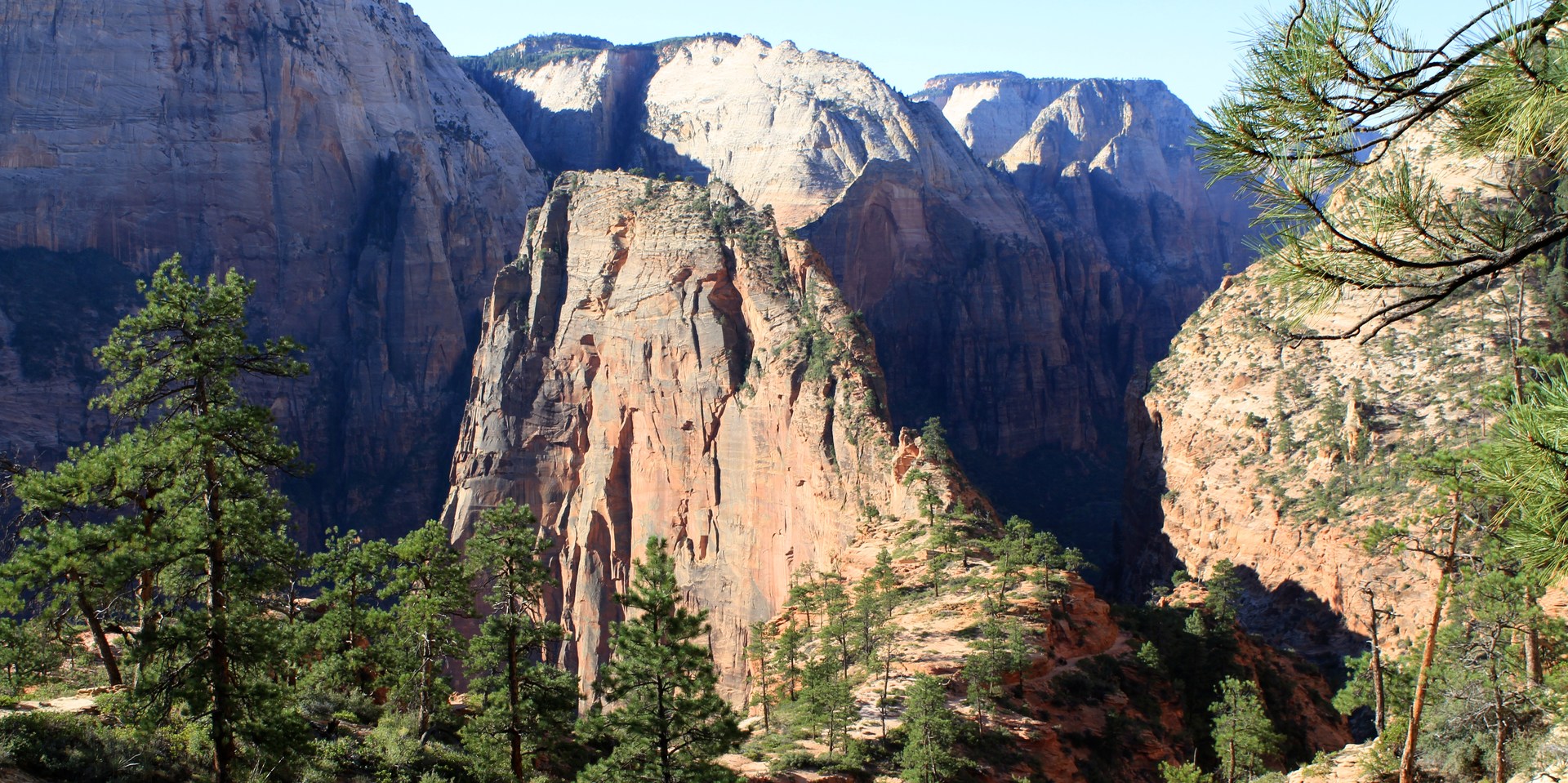With four different climate zones and an huge diversity of plants and animals in its 229-square-mile area, Zion National Park is one of the most unique and beautiful landscapes in the United States. Zion was first settled by Native Americans 8,000 years ago, and more recently by the Mormons in 1858. Originally named the Mukuntuweap National Monument, Zion was designated a National Park in 1909.
This 35-mile one-way trek starts in the northwestern corner of the park and ends in the main valley. You will begin your adventure off Kolob Canyon Road. The first day is only a few miles long and follows a gentle downhill into a wide canyon. The second day will be the only section with a constant, reliable water source, so enjoy it while you can. Day three is a long stretch, and much of the 12-mile section meanders through a canyon filled with cows. You may need to follow offshoot stream beds to find uncontaminated water here. Once you climb out of the canyon, you will find yourself surrounded by vistas. Continue for another few miles to reach Northgate Peaks.
Day four is another long day of hiking along a ridge with incredible views. There are two natural springs along your route, and depending on the season, it may take 15 minutes or more to fill a water bottle. Regardless, take advantage of every opportunity for water. The next campsite is a good choice for a rest day, as there are many spots and vistas to explore. Day six continues along the ridge for another 5 miles. On the final day, you will begin with a long descent to the main Zion Valley, passing Angels Landing along the way. If you don't have a fear of heights, spend an hour climbing to the top of Angels Landing for incredible views to finish off your trek. If you are looking to extend your trip for a few more days, you can continue up the other side of the valley toward the East Rim Trailhead.
Note that this route has very few water sources, and hikers should be prepared to carry at least four liters of water.

























Comments
Sign In and share them.